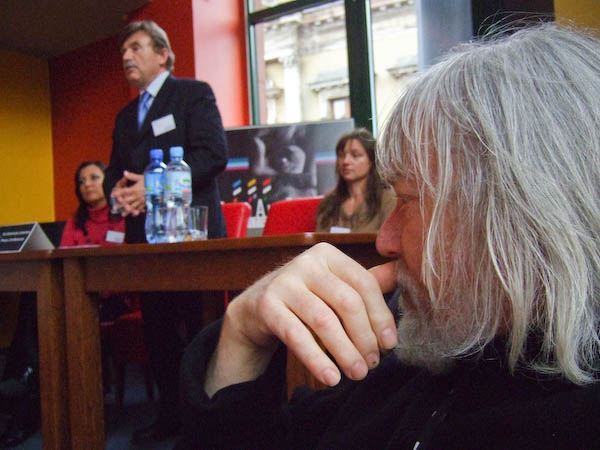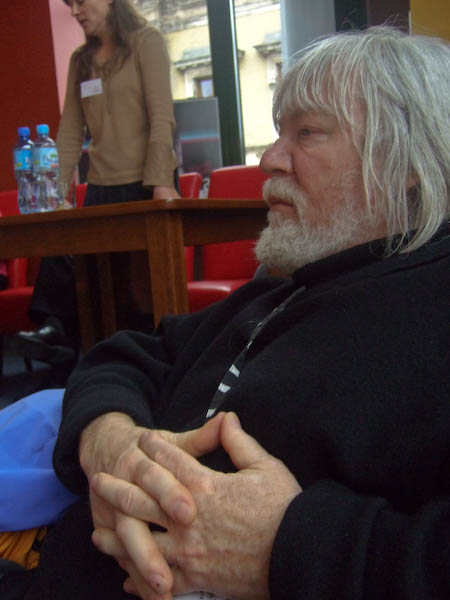FotoArtFestival 2007
A group of photographers including Alex ten Napen, Misha Gordin and
Joan Fontcuberta were already at the Prezydent along with some of the
guides when we arrived and we joined them at the large centre table.
By the time we had eaten, it was almost time for the press conference,
and we strolled across to the Galeria Bielska BWA where it was to take
place, waiting as usual for an age at the crossing for a green light. We
met up with Jose as we walked into the gallery
Nothing much was happening when we arrived, and there was time to look
at some of the work on display there.
Seven Deadly Sins
On the lower floor were the large panoramas of the 'Seven
Deadly Sins' created by Lukas Maximilian Huller
(b 1969, Austria) and a team of collaborators, including Etienne
Tombeux from Belgium who was here in Bielsko. These were
inspired by the work of Heironymus Bosch, and also used as references
many works from film and photography of the 20th century.
We stood in front of them for some time trying to work out exactly how
they were made - and later Etienne's presentation supplied most of the
answers.
Clearly the intention is very different from Bosch, whose work although
it displays a very real fascination with the underside of this world and
their possible extrapolations in hell is essentially religious in
nature. These works are eclectic and essentially amoral, postmodern
images where any glimpse offered into a moral dimension is through our
own oversated rejection or revulsion at their emptiness.
They are clever, superbly realised, witty and I love them. But they are
also partial, parodic, showy and essentially trivial. I like that too,
but it ain't life.
Shout; Doubt
Misha Gordin's work
is powerful stuff too, which I think reflects the torture of the soul
under totalitarian regimes - such as he grew up under in Latvia, leaving
for the USA after 28 "years of disgust with communist authorities".
He is clearly a master of photomontage in the darkroom - as yet he has
not felt the need to try working on his images with computers.
I found the presentation of his work on screen more powerful than
seeing the prints on the wall - and I'll perhaps say more about his work
when I come to that on Sunday afternoon.
Imaginary Landscapes
Joan Fontcuberta's work which generally challenges and
investigates the nature of photographic truth, also arose out of growing
up under a totalitarian regime - Franco's fascist Spain.
I've written in another place about some of his earlier work - in
particular the incredible history 'Fauna
Secreta' created with Pere Formiguera documenting the
research of the imaginary German biologist, Dr. Peter Ameisenhaufen.
His 'Landscapes without Memory' is to me rather less
interesting. These computer generated landscapes may be impressive, but
despite the use of photographic paper for output they are not
photographs. It is more a rather sophisticated painting by numbers.
Their production is also a process that involves consderable
intervention by the operator as well as an initial file. Using as he did
a digitised version of a famous picture as an input file, the choices
and parameters required by the rendering software could actually produce
a very wide range of different outputs rather than the single
possibility he presents.
I'm not sure why - perhaps the limitations of the render design - but
the black and white versions in the catalogue - which were also shown in
the opening presentation at the festival - seem considerably more
realistic than the colour prints on the gallery wall. The reason why
this should be is actually a question I find more interesting than those
posed by the project overall.
Circus
I think to truly appreciate Sarah Moon's work Circus
you need to look at the whole work, either on film or as the series of
images that were displayed around the room with text in French. Based on
the Hans Christian Andersen story "The Little Match Girl", but
re-written by Moon. I think of her still images very much as frames from
a film, and they display a powerful sense of mood, enhanced by the dark
tonalities and degrees of unsharpness she gets from the often
deliberately maltreated (distressed) Polaroid black and white negatives.
There is a fine interview
with her by another great photographer, Frank Horvat, on his web site,
and you can find more of her work on the Howard
Greenberg Gallery site (click the Artists tab and look for
her name). On the same site you can also see the 34 images from Circus -
click the Exhibits tab and then 'Previous' and look for her Circus show
which was there in Dec 2004-Jan 2005.
Press Conference
I'm a little embarassed to be told to sit at the front during the press
conference with all the photographers invited for the festival, although
the sofa I'm on, between Misha and Jose, is comfortable enough. Opposite
us on a similar sofa are Jose, Sarah and Alex, with the others up on
side of the platform behind me, and a room fairly crammed with
photographers and journalists in front of us.
The kind of introductions each of us gets are probably pretty
embarassing, but since they are almost entirely in Polish perhaps less
so for most of us. I'm told what was said about me was complimentary,
and it certainly gets a good response. But what really attracts the
attention of the photographers is that I get out my little Fuji and take
a few snaps myself of the proceedings.
Later come questions, though fortunately not many, and we are all
invited to speak, but like me most of the others decide that discretion
is the better part. Then someone asks if any of the photographers have
taken pictures in Bielsko, and Inez mentions me, and I have to get up
and say something.
Something like how pleased I was to be back in Beilsko-Biala again, and
how 2 years ago I had come with my pictures of a derelict
post-industrial London, only to look out of my hotel room onto a similar
scene and realise that I was bringing 'coals to Newcastle', and that I
was pleased that my room this time had the same outlook.
And of course to say what a fine festival this was, with a great
atmosphere - very much thanks to the great efforts of the person
standing up in front of the room (gesturing at Inez.) It was another of
my remarks she failed in translation.
After the press conference we had an hour or two spare before the
opening ceremony. There was still a little light and I decided to
continue my walk around Bielsko.
(continued on next page.)


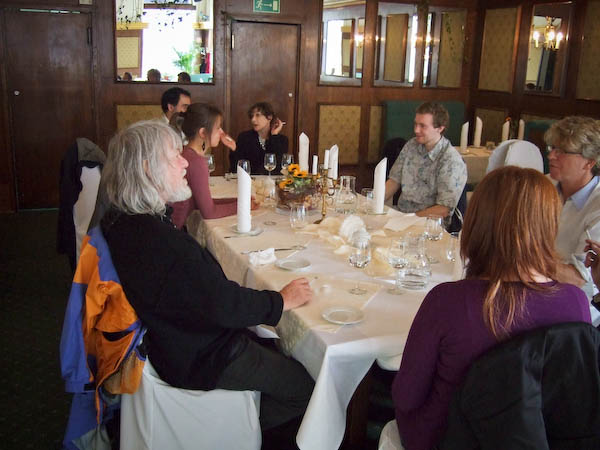
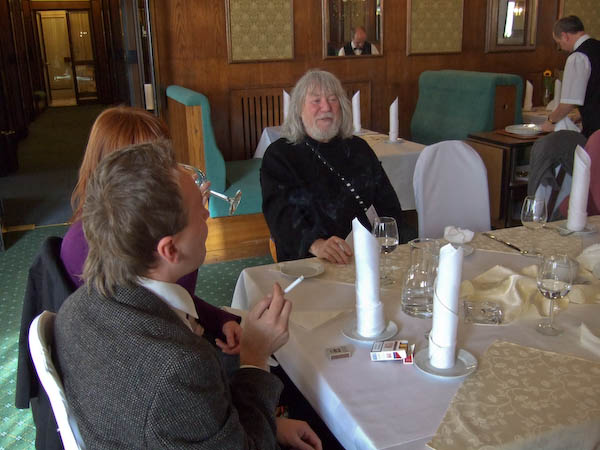
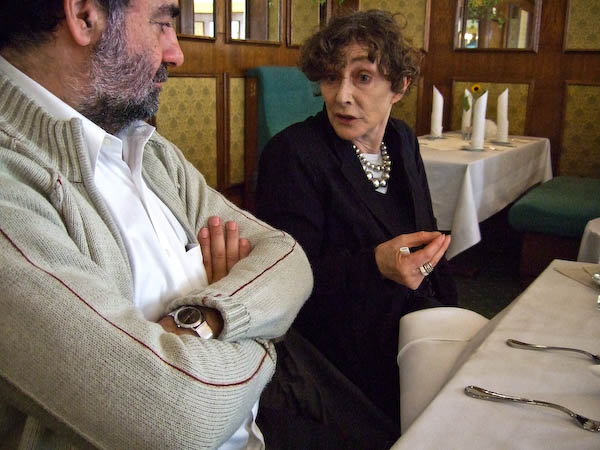
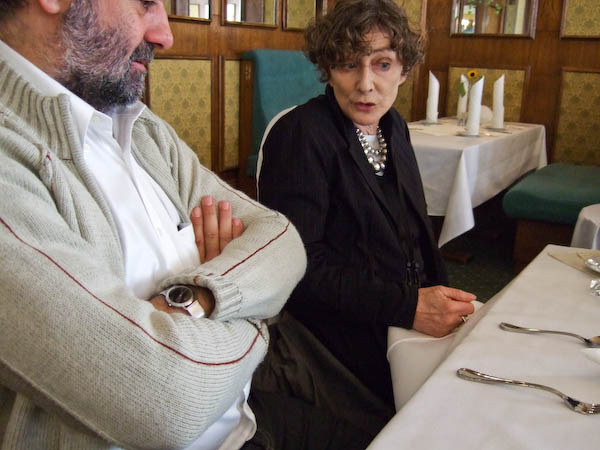
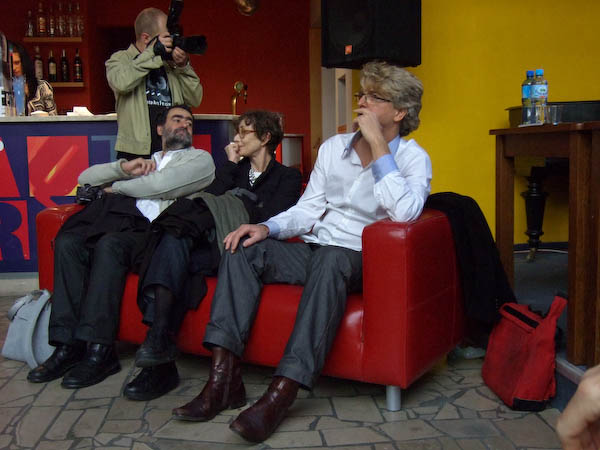 At the
Press conference
At the
Press conference 